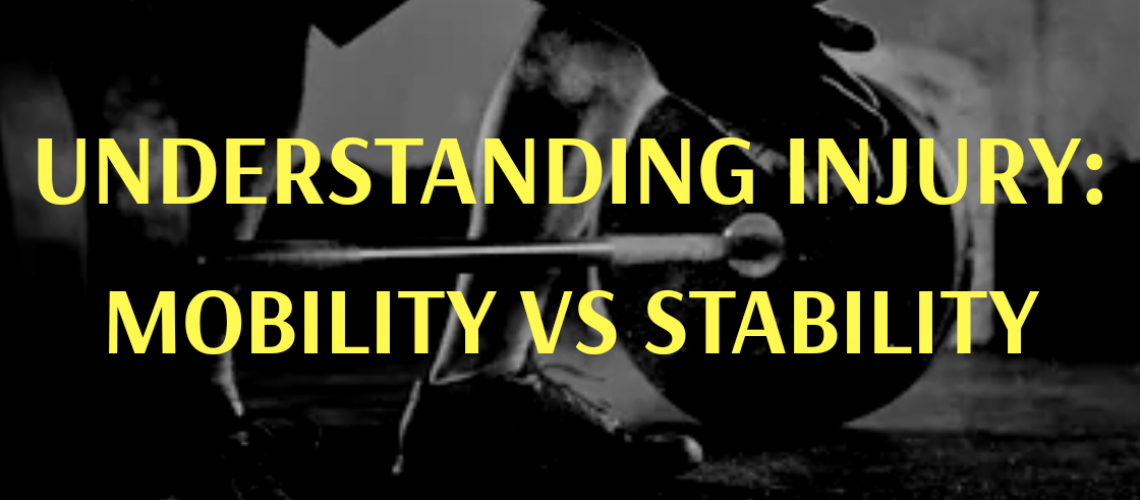Mobility and Stability go together like Shaq and Kobe; PB and Jelly. Just like the duos mentioned, they are complimentary in nature. A joint that is inherently mobile, sacrifices some stability. And a joint that is stable (ie. Low back), restricts it’s mobility.
The human body, as complex as it is, can be (over)simplified
to just a stack of joints that rely on eachother. Each joint has a specific
function; and therefore, particular training needs. This has been noted in the
change of most exercise programs from the classic “chest-triceps-shoulders” to
“push-pull, hip-extend and knee-extend” programs that we see now.
Mobility = The ability to actively move a joint through it’s range
of motion
Stability = the ability of a joint
to actively resist motion
No joint is exclusively mobile or stable; rather – has a blend of both; but tends to favor one over the other (ie. Need to be more mobile (hip); vs Need to be more stable (ie. Low back))
| Ankle | Mobility (Sagittal) |
| Knee | Stability |
| Hip | Mobility (Multiplanar) |
| Lumbar Spine | Stability |
| Thoracic Spine | Mobility (Multiplanar) |
| Scapula | Stability |
| Glenohumeral Joint | Mobility (Multiplanar) |
| Cervical Spine | Stability |
The first thing you should notice is these joints ALTERNATE between mobility and stability. This highlight the interconnectedness of each joint to the one above and below.
To illustrate, I’m going to use an example that almost everyone has suffered from – Low back pain. The primary need of the Lumbar Spine is stability – No one goes to the gym to work on core mobility; we all acknowledge that we need core stability. But, what happens if we have a dysfunction of the joint below? – in this case, a loss of hip mobility. If the hips can’t move well; the Lumbar Spine will. The problem is that the Lumbar spine is not designed for mobility; the hips are – and when the intended joint loses it’s mobility; the stable joint needs to sacrifice it’s stability. The end result – less stability in the Lumbar Spine and Core… INJURY!
If we look at the most commonly injured sites of the human body – Knees, Lumbar Spine, Shoulder Complex – these are typically joints that are supposed to be stable. However, lack of variability in movement, or exercise leads to immobility of the Hips, Ankle and Thoracic Spine – which just-so happen to neighbour these affected joints.
If we look at the Lumbar spine again, most people complaint of pain with bending forward and rotating. If we are unable to flex the hip adequately, or rotate the hip; the Lumbar spine has to do “hip things” which it’s not meant to do …INJURY!
If you’ve been suffering from low back pain, or knee pain; I’d say look at your hips. These are the results of joint dysfunction; Poor hip mobility leads to low back pain; Poor ankle and hip mobility lead to knee pain; Poor thoracic mobility leads to neck pain.

